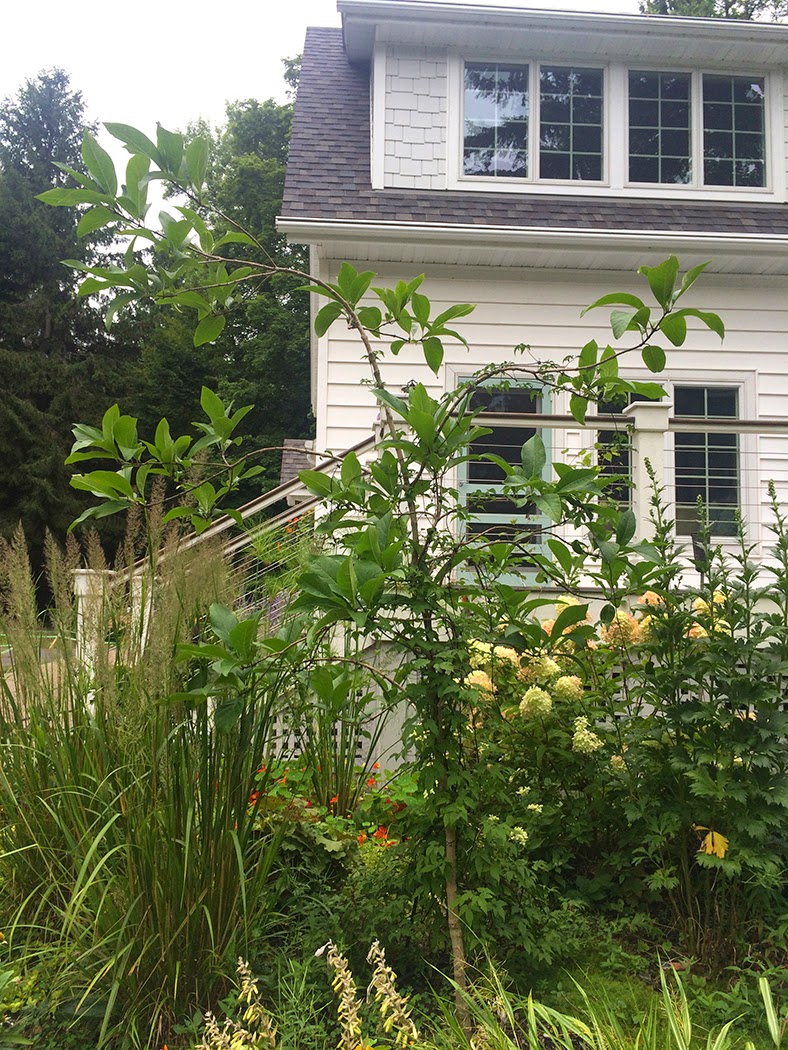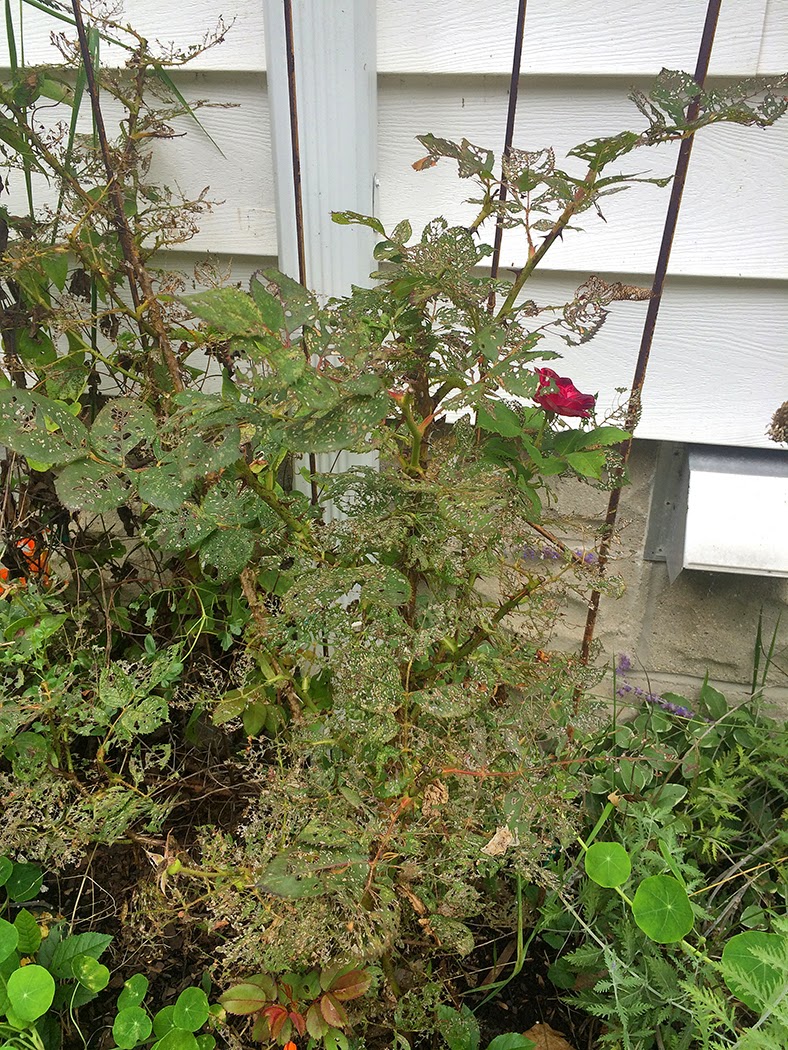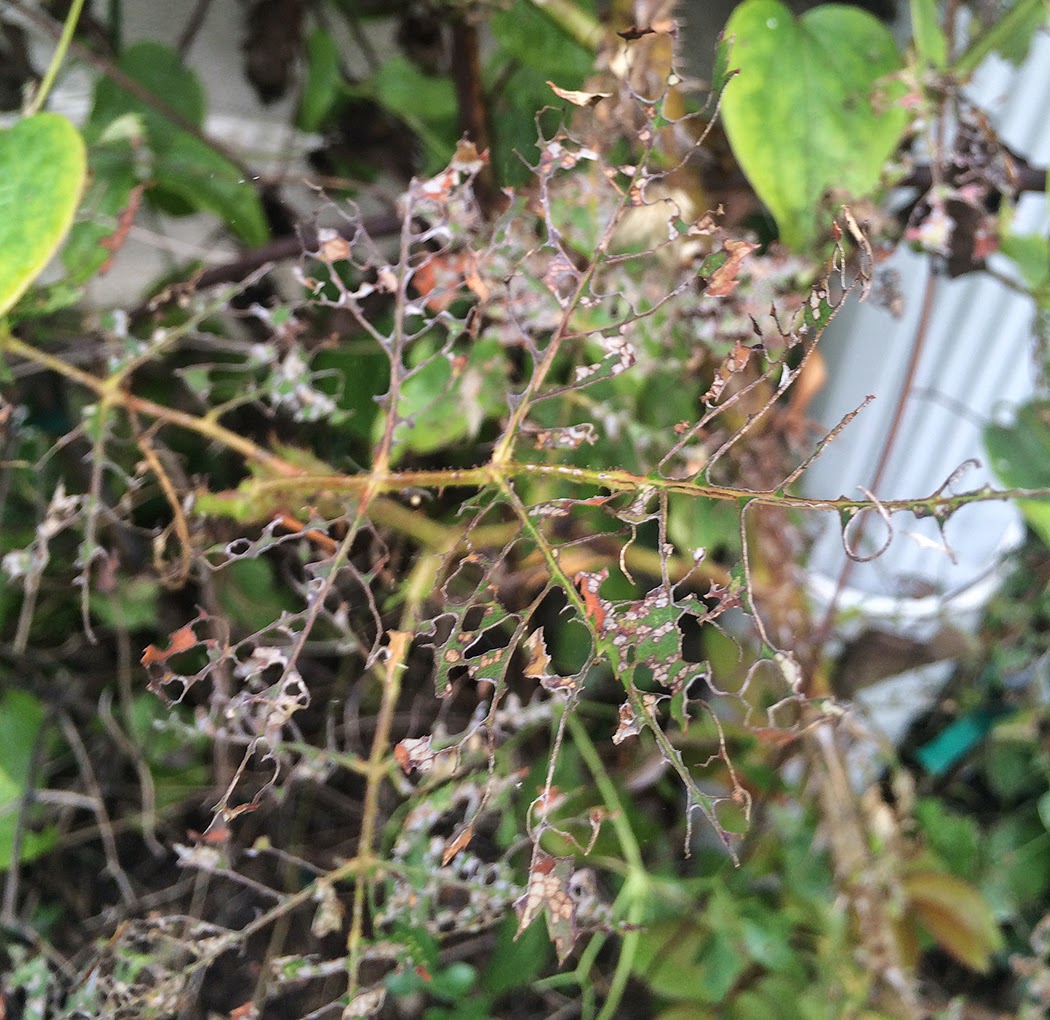And I am officially putting two pretty important plants on notice. It’s time to shape up or get shipped out.
The first, I’m very sad to say, is the fringe tree (Chionanthus virginicus) in the little terraced garden off the deck. (See a schematic view of what gardens are where here.) I planted it as the centerpiece of that garden in 2011, so this should have been its “leap” year (plants are said to “sleep” the first year, “creep” the second year and “leap” the third year), but it has done anything but come into its own. It’s trunk is still quite skinny, showing very little growth since we planted it. It has gained some height and width but it’s very odd how the leaves are sort of clustered at the ends of the branches. I’ve counteracted that problem by allowing a clematis to grow up it, which helps quite a bit, but it still looks sparse to me.
I fell in love with the idea of a fringe tree because my mom has a beautiful one that is gorgeous and dense and absolutely laden with flowers. Of course hers is much older than mine but neither of us remembers hers ever being so sparse. And worse yet, the flower situation was horrible this year. I think there were maybe two flowers on it. There is a chance I may have a female plants while my mom has a male plant as the flowers are showier on a male. Female plants will eventually produce fruit as well, but I’ve seen no sign of that.
I do like the large leaves of the fringe tree and its bright yellow fall foliage, but given that it is one of the last trees to leaf out in spring and the flowers have been disappointing, the cons are currently outweighing the pros.
Given that trees are expensive and slow growing, I’m inclined to just hang in there with the fringe tree for one more year, but if the perfect replacement tree pops up, you never know, the fringe tree may have to go. In either case, it’s definitely put up or shut up time for the fringe tree.
The second plant that I’m putting on notice that it might be on its way out, is there through no fault of its own. I’m speaking of the ‘Cancan’ climbing rose on the front of the house. Despite a beautiful display of flowers in late spring or early summer (and a few repeat blooms right now), every year this plant is absolutely eaten alive. In previous years aphids have been the problem. Earlier this year I found a sawfly larvae infestation on it. I thought I had it handled, but the leaves are now skeletons. Its shabby foliage looks absolutely horrid.
I don’t think there’s anything wrong with this climber. And in many ways, it’s a good location for a rose: southern exposure, next to the house, nice and warm in the winter, etc. But this garden is a tiny strip of soil maybe 3 feet wide between the house and the patio. Rain doesn’t reach it much and I don’t really know how deep the soil there is.
I was better about watering there this year than I have been in the past and I really was babying the rose. It’s my belief that insects are opportunistic and usually prey upon plants that are compromised in some way.
This year, when the nearby window box was full of orange flowers, I realized that the bright magenta blooms of ‘Cancan’ don’t look so great with a lot of color combinations I tend to plan in the window box.
So I’m starting to think that maybe I need to look for another climber for that location. I’d love for it to be a rose, but that may be a fool’s errand given Cancan’s fate. Whatever goes there, I think I need to do a thorough job of amending that soil heavily and see if that helps plants stay healthy.
I wish plants read blogs. Maybe these two would shape up if they knew that I’m deciding their fate.





2 Responses
I've got a couple of things going on notice this year – a poor sad clematis that never seems to do anything on the back fence and the heliopsis which has taken over my garden – too much yellow!!
We took out a couple of trees a few years ago that just never did much size-wise or statement-wise. They just occupied prime real estate. We didn't have a place to move them so they just bit the dust. Do you have a spot that is less visible where the fringe tree could still make a statement but its slowness would be less of an issue? I have an Alba Plena white rose that is out front in too much shade. Not many flowers and often aphids. I keep thinking I could move it to a sunnier prime spot now that I lost so many little trees and plants in my former shade garden that is now sun. But looking at your rose is making me think twice. I've been worried that I might get more flowers along with its usual ugliness and your rose is enough to make me just leave mine where it is. It's always something!